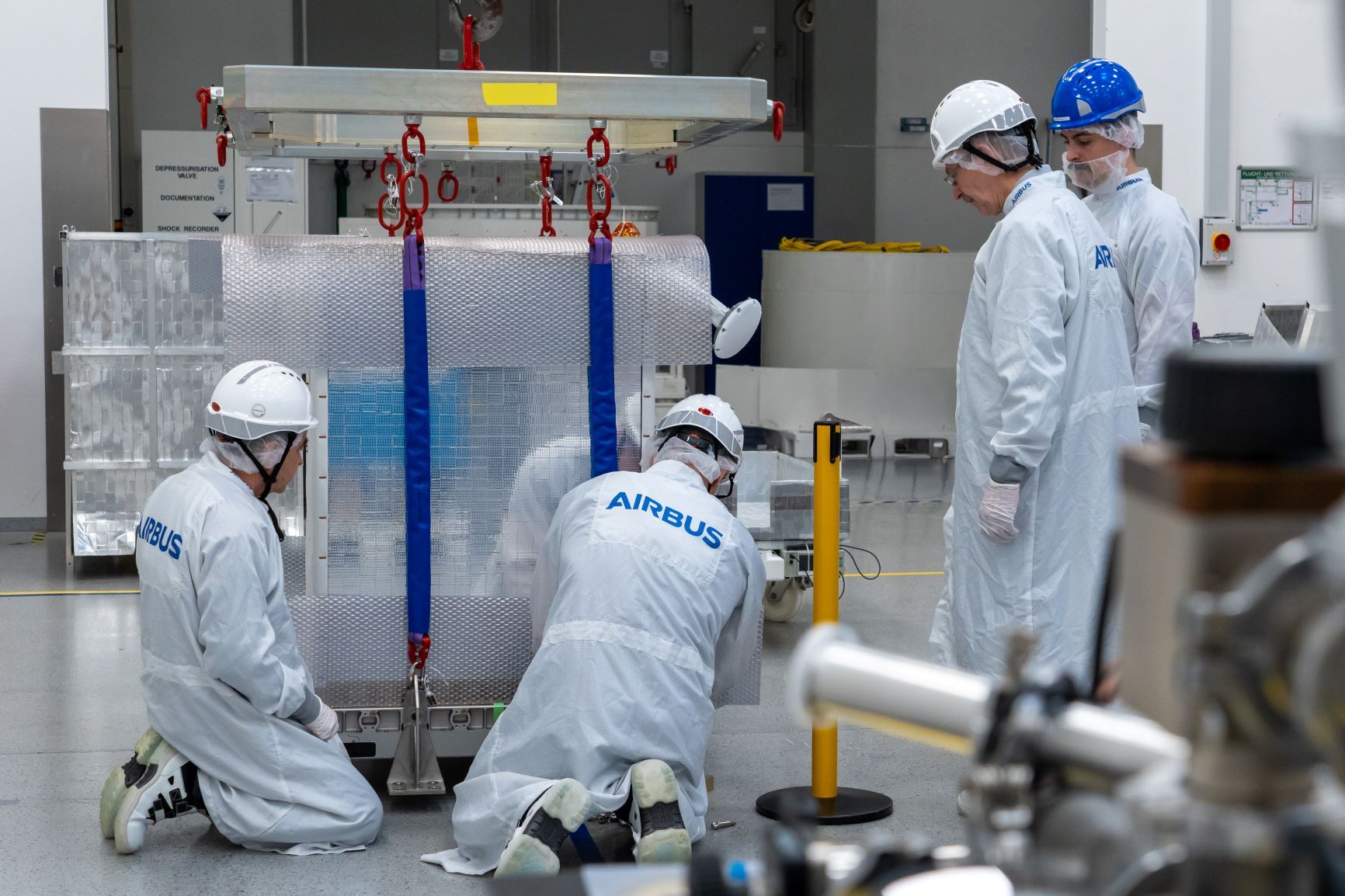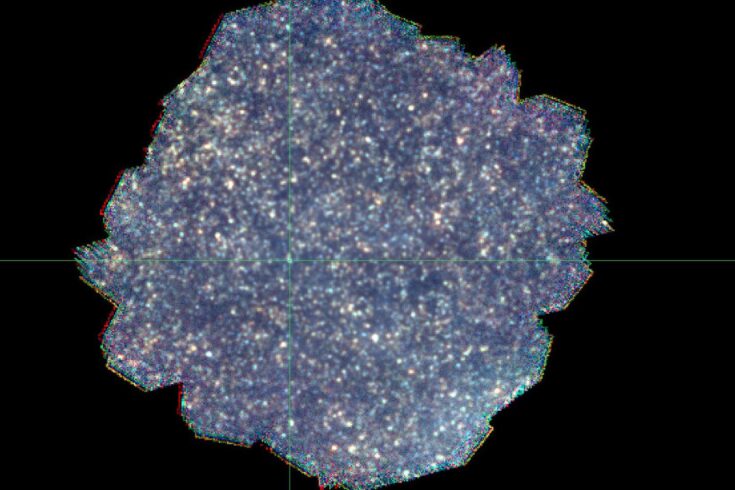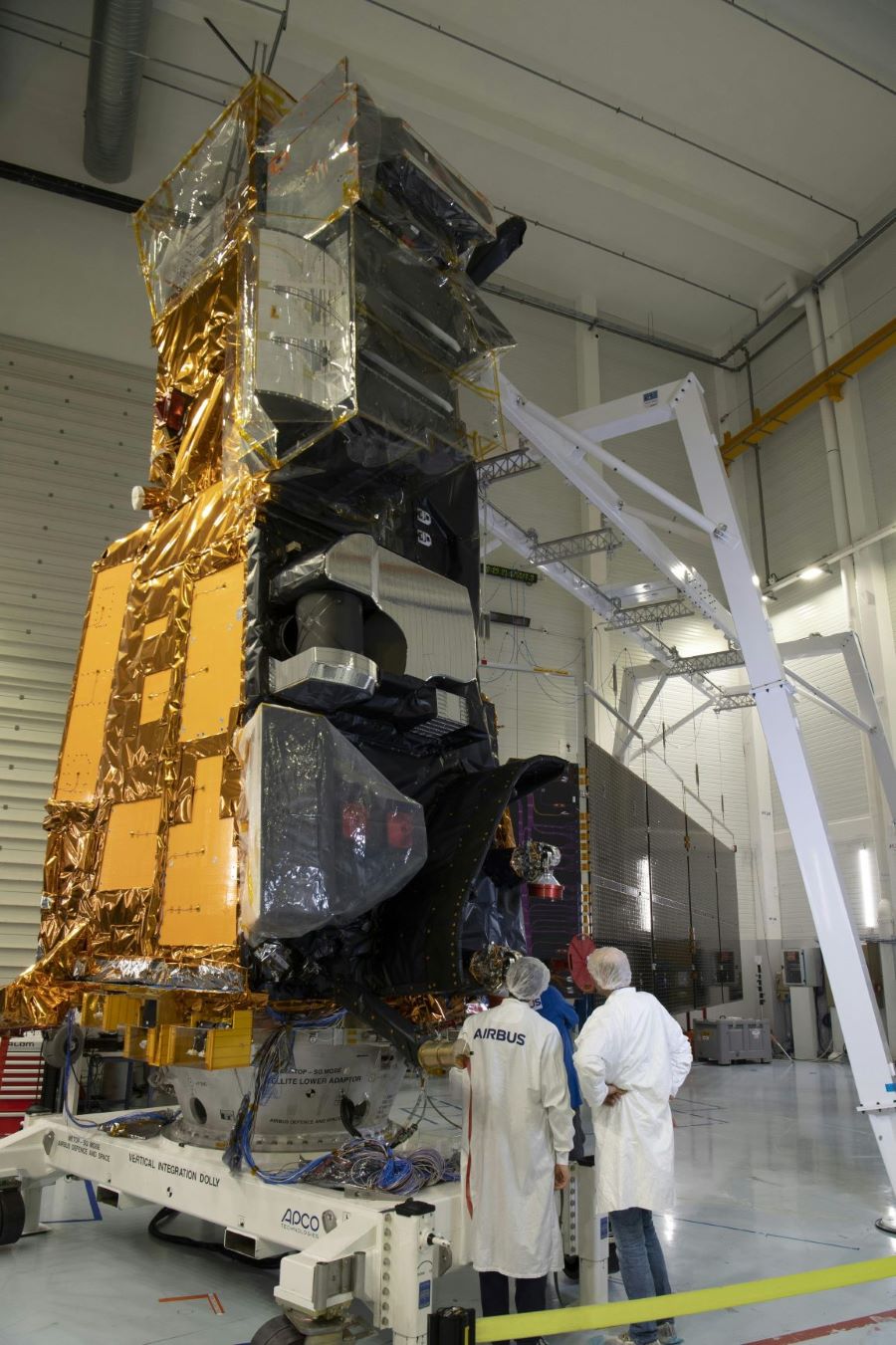James Webb Space Telescope advances understanding of galaxies

Above:
This image highlights the location of the galaxy JADES-GS-z6 in a portion of an area of the sky known as GOODS-South, which was observed as part of the JWST Advanced Deep Extragalactic Survey, or JADES, data from which was used as part of the study.
Courtesy European Space Agency
An international team of astronomers has for the first time detected the presence of carbon-rich dust grains in the first billion years of the Universe.
These small diamond-like particles found between the stars are integral to the formation and evolution of galaxies such as the Milky Way.
The team is supported in part by UK Research and Innovation (UKRI) and the Science and Technology Facilities Council (STFC).
Answering fundamental questions
Early stars in a galaxy are made up of only hydrogen and helium. These stars though give rise other elements including carbon and oxygen through events such as supernova explosions.
Some of this carbon coalesces into microscopic dust grains that enable gasses to cool, and stars and planets to form as the galaxy grows and matures.
For this study, scientists used the James Webb Space Telescope (JWST) to look at light from extremely distant galaxies that are much younger than our own and found that these dust grains were present much earlier than predicted.
Discovering where we come from
Dr Joris Witstok, STFC funded researcher at the Kavli Institute for Cosmology at the University of Cambridge and lead author on the study said: "This is an exciting step towards discovering where we come from and how our solar system might have formed.
"Our results provide clues that should help us to trace back and determine when and how the elements that make up all of us first emerged in interstellar space."
Advanced scientific capabilities
Carbon-rich dust grains are detectable because they absorb light at particular, characteristic wavelengths.
It is only thanks to JWST and its advanced capabilities though, that the team were able to observe this effect. Prior to its launch, there were no telescopes that could receive light from such great distances.
The study made use of the advanced capabilities of the JWST NIRSpec (Near-Infrared Spectrograph) instrument.
Dr Joris Witstok, continued: "We’re still constantly surprised by how much detail we’re able to achieve with JWST and the new astrophysics we’re able to explore.
"This result is just the latest in a long line of things we weren’t expecting to find that JWST has thrown at us."
Looking to the future
The team will now look to use an even bigger dataset on other galaxies to verify their findings.
They also plan to involve theorists to help explain how the carbon-rich dust grains observed could have formed in such a short timescale.
Dr Renske Smit, researcher at the Liverpool John Moores University Astrophysics Research Institute and STFC Ernest Rutherford Fellow, who contributed to the study said: "I’ve studied galaxies in the first billion years of cosmic time my entire career and never did we expect to find such a clear signature of cosmic dust in such distant galaxies. The ultradeep data from JWST is showing us that grains made up of diamond-like dust can form in the most primordial of systems.
"This is completely overthrowing models of dust formation and opening up a whole new way of studying the chemical enrichment of the very first galaxies."
Webb is an international programme led by NASA with its partners, the European Space Agency (ESA) and the Canadian Space Agency.
The UK is playing a major role by leading the European Consortium. The UK, partnered with US institutes, designed, built and tested one of the four main science instruments, the MIRI, backed by UK Government funding.











